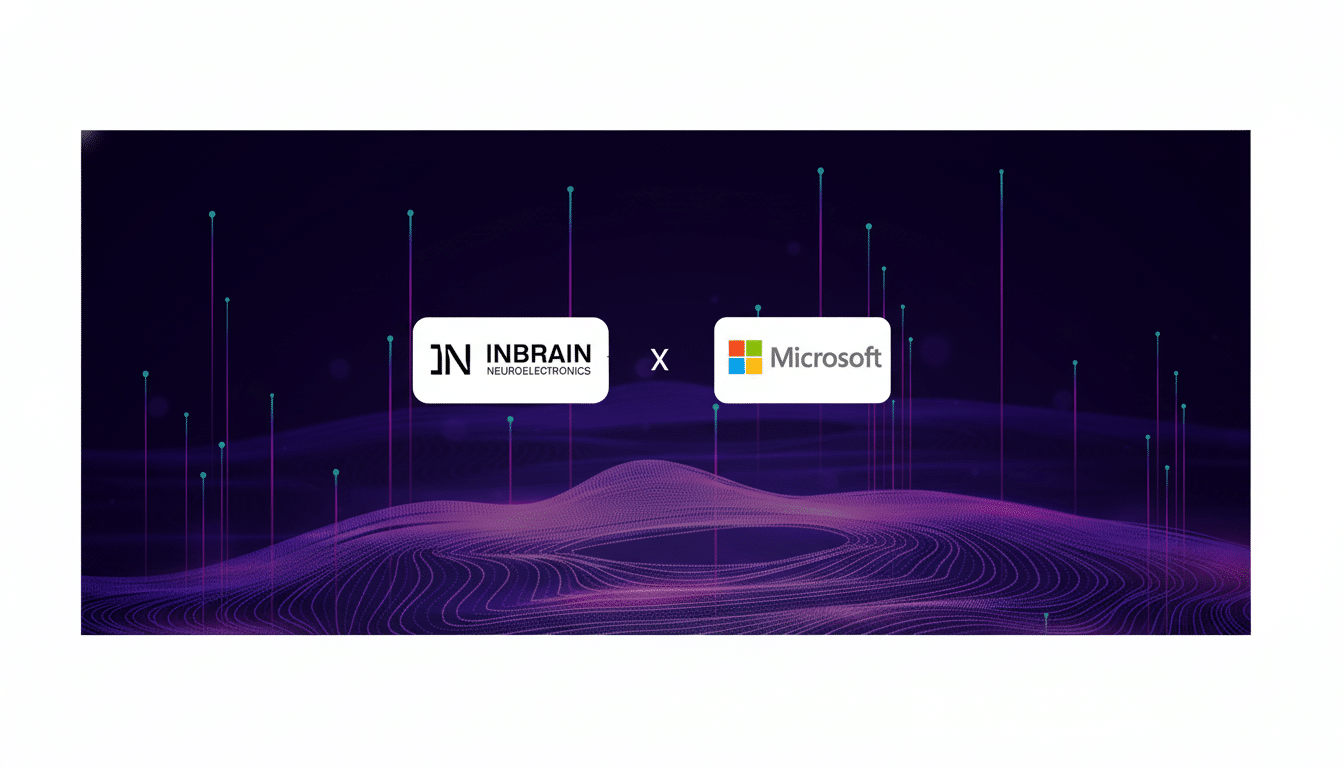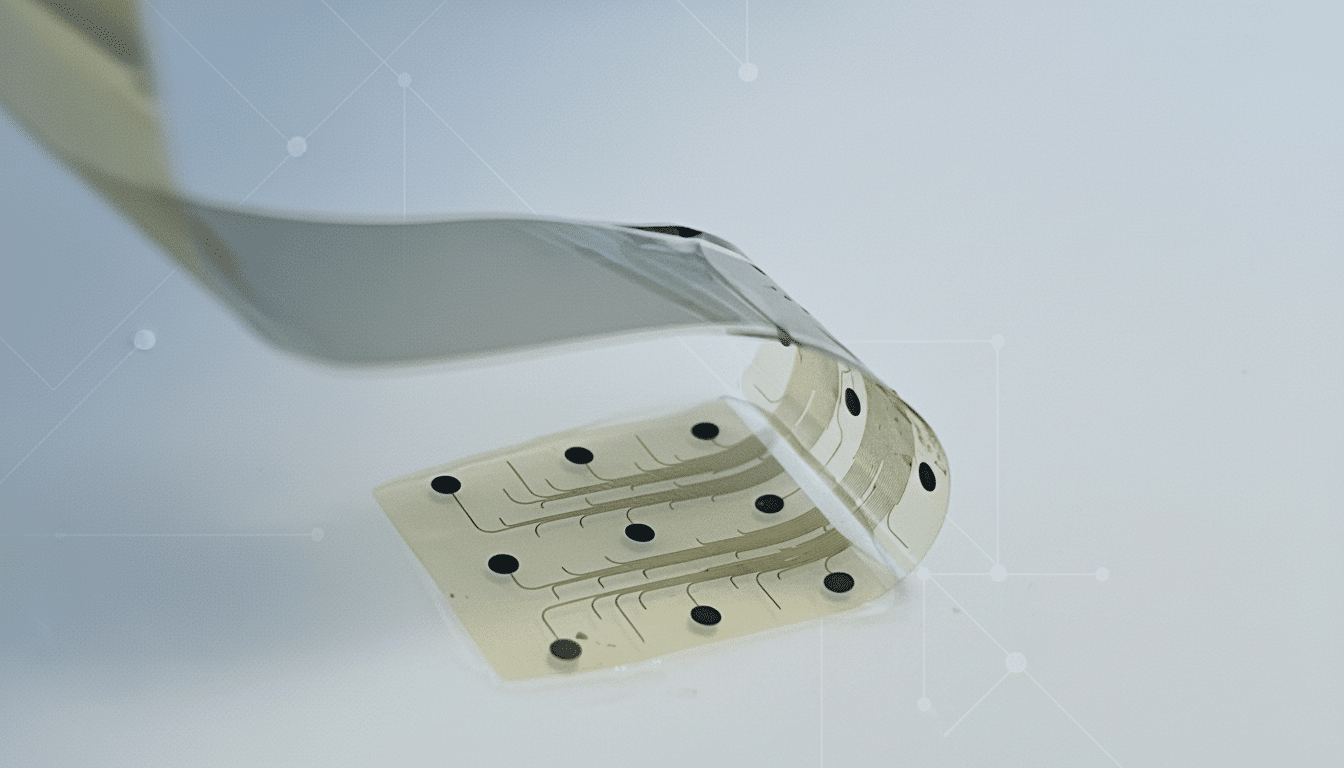Microsoft enters space with brain implants, partners with Inbrain — Microsoft’s new partnership could empower devices in the future to read our minds. Fusion of Inbrain’s implant with Microsoft’s agentic AI and cloud is expected to develop closed-loop therapies which can read mood from neural signals and alter stimulation in real time, like an operating system for the body.
What the Microsoft and Inbrain partnership does
The first technical objective is that of model integration — can AI successfully decode brain activity on the fly and deliver fast, safe kinetics of the therapeutic response? In practice that involves training and validating models in the cloud while pushing optimised inference to edge hardware that runs close to the implant, reducing latency and conserving privacy.
- What the Microsoft and Inbrain partnership does
- A new kind of implant built on graphene materials
- Why this approach could matter to patients worldwide
- The BCI stack defined: a winner-take-all ecosystem
- Regulatory hurdles and safety for AI-driven implants
- What comes next for Microsoft and Inbrain’s roadmap

Agentic AI is central here. Rather than simply categorizing signals, the system monitors neural states and predicts intent or clinical risk, as well as determining an action — such as delivering just the right amount of stimulation. If done correctly, this transition from “remote control” to “co-pilot” has the potential to reduce the lag between symptom onset and intervention from minutes to milliseconds.
A new kind of implant built on graphene materials
Inbrain’s device is a thin, straplike array that lies on the surface of the brain and is made from graphene, a single-atom-thick lattice of carbon. Its conductivity, as well as its mechanical flexibility and biocompatibility, render graphene an attractive material for high-density recording and stimulation with potentially lower tissue irritation compared to stiff metals.
That’s compared to thread-like penetrating electrodes favored by Neuralink, which target single-neuron resolution, and Synchron’s stent-based endovascular implant, which accesses the motor cortex through a blood vessel. Inbrain’s bet is that widespread, surface-level coverage coupled with clever decoding can get the optimal balance of signal quality, safety and surgical complexity.
Why this approach could matter to patients worldwide
Neurological disorders are also common and undertreated. The Parkinson’s Foundation says that some 10 million people worldwide are living with Parkinson’s. According to the World Health Organization, there are about 50 million people who have epilepsy. Symptoms vary through the day for many people, and medication or manual device adjustments may not keep pace with changing brain state.
Closed-loop neuromodulation is already well established in similar applications. NeuroPace’s responsive neurostimulation device for epilepsy demonstrated median seizure reductions of over 50 percent in multiyear follow-ups, showing that adaptivity matters. Introducing a modern AI element to the loop could enhance accuracy in detecting targets, personalize how and when stimulation is provided, and reduce side effects by providing just enough therapy at that time.
If the metaphor of an “OS for the body” bears out, patients could eventually expect something akin to firmware-level updates that refine control over tremor, gait freezing — or even seizures and mood states — without more surgery: upgrading a software suite, not a hardware system.
The BCI stack defined: a winner-take-all ecosystem
Microsoft isn’t the only one looping a digital layer around BCIs. Apple added native support to normalize much of the Bluetooth communication with assistive devices and Synchron was the first BCI company to adopt that path for use by patients. Nvidia has also demonstrated toolchains to decode neural signals and train AI on data from implants. New startups building these brain-reading devices from the ground up are attracting investment and deals that, for now at least, remain under wraps, while industry-watchers speculate about which of the world’s most prominent AI founders have climbed aboard any given venture — a testament to the strategic pull this already has.

The playbook that is beginning to take shape: device makers concentrate on safe, durable interfaces while tech giants handle the AI models, security, compliance and cloud-scale data management. The winner will help shape an end-to-end experience, from silicon to signal pipelines, clinical dashboards and developer tooling for new neurotherapies.
Regulatory hurdles and safety for AI-driven implants
Implanted stimulators for movement disorders have been in use for many decades, but fully implantable BCIs enabling communication and sophisticated control are only seen in limited clinical trials and under regulatory review. The FDA is the drug and medical technology regulator in the U.S., and investigational device research progresses under FDA-controlled protocols. In the U.K., studies are overseen by the MHRA. Aspects of safety, efficacy, and benefit–risk must be achieved over time.
Adding AI raises additional obligations. Medical software is intended to conform to norms such as IEC 62304 for lifecycle processes and ISO 14971 for risk. Cybersecurity and privacy controls should conform to those found in regulated healthcare environments, including tight policies around training data, audit trails and model updates. Regulators will likely concentrate on transparency (why the model acted), latency bounds, and robust fail-safe modes.
A practical constraint: energy. High-fidelity recording and onboard inference can use a lot of power. That will push the architecture toward ultra-efficient edge chips with some selective streaming to the cloud for learning and oversight, not moment-to-moment care.
What comes next for Microsoft and Inbrain’s roadmap
In the short term, the teams are aiming to decode neural signals in real time and validate clinical workflows that can apply to hospitals and home care. Early applications will likely address clear, quantifiable endpoints — like decreasing off-time in Parkinson’s or seizure frequency — before moving on to more complex psychiatric or memory disorders.
Important benchmarks to keep an eye on are how well it decodes in everyday life, the time it takes for the system to close loop from detection to stimulation, battery duration with continuous use, signal stability over months and increased quality-of-life scores.
If Microsoft and Inbrain achieve lasting gains in these other fields, they won’t have shipped yet another medical device — they’ll advance the reference architecture for intelligent neurotherapies.
The notion of an OS for the body is ambitious, but the ingredients are coming together: better materials, better models and better delivery. The tough part is being able to stitch them together safely, transparently and at scale. That’s precisely the bet this partnership is making.

